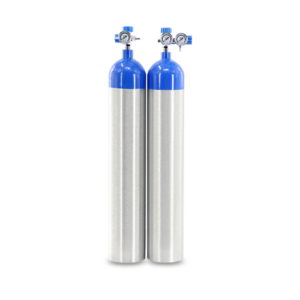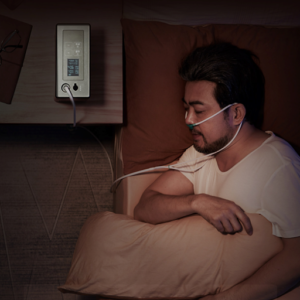Oxygen Therapy- Is It Dangerous For you? Everything You Need to Know About Oxygen Therapy
From the microscopic cell to the whole organs, our body needs oxygen gas to survive. The red blood cells that carry oxygen around after absorbing it from the lungs are just as important as the lungs which allow the exchange of gases to take place between air and red blood cells. Often anemia presents the same symptoms as when one has oxygen deficiency due to difficulty in breathing.
There are however conditions where a person experiences difficulty in breathing or breathlessness. In these situations, the body starts getting a lower amount of oxygen than what it needs to thrive. Low oxygen levels create a plethora of problems for the body including headaches, increased blood pressure, chest pain, shallow and fast breathing, lightheadedness, and confusion.
Low blood oxygen levels mean that vital organs are unable to get the required oxygen for their proper functioning. So, a question arises, how do you stop the difficulty in breathing and when is oxygen therapy allowed as a treatment option?
What is Oxygen Therapy?
A therapy in which the patient is given oxygen via different routes. Oxygen can be given through the nasal tube or the facial mask.
Oxygen therapy or supplemental oxygen becomes a daily need of those who cannot breathe properly on their own. These people require oxygen to help their bodies function normally. If the oxygen level falls below 89% as measured on an oximeter (Get yours from this link ) or if the arterial blood oxygen pressure goes below 60mmHg, the person would need oxygen to help out.
Things To Consider During Pulse Oximeter Usage
You can easily monitor your oxygen levels with a pulse oximeter anytime. The whole process is non-invasive and only requires one to wear the device on their finger.

Before you do use the device, make sure to:
- Rub your finger to make it warm. Make sure there is blood near the skin surface (enough to allow accurate reading)
- A professional can apply a local vasodilator to make blood come to the contact point easily.
- Use different sites to ensure that you’re getting accurate readings.
There are a few things that can mess up your pulse oximeter readings for the blood oxygen level. They include:
- Machine battery/power issue.
- Skin pigmentation.
- Presence of dyes inside the blood vessel.
- Lower oxygen levels (accuracy drops after a certain level)
- Continuous or repeated movement.
- Nail polish.
- Bright lights.
Certain health conditions can also make the pulse oximeter show low blood oxygen levels. They include the following:
- Anemia
- Type 2 diabetes
- Venous congestion
- Sickle cell anemia
- Methemoglobinemia
- Sulfhemoglobinemia.
In confusing cases, often the patient ends up getting oxygen therapy wrongfully. For a clinically reliable method, arterial blood oxygen levels should be checked.
Conditions Where Oxygen Therapy Might Be Utilized
There are several conditions, both acute and chronic, that can make a person have difficulty in breathing or make them suffer from breathlessness.
The acute conditions include:
- COPD exacerbations
- Major traumatic event
- Asthma exacerbation.
Chronic situations include:
- COPD
- Cystic Fibrosis
- Lung Disease
- Sleep Apnea
- Lung Damage
- Heart Failure
- Pulmonary Fibrosis
- Lung Cancer.
All of the above-mentioned situations can affect your normal breathing. The oxygen saturation levels change from a normal of 95%-100% to a lower percentage.
Signs That You Have Low Oxygen Saturation
There are certain indications that one needs to get their blood oxygen levels checked. The visible sign of cyanosis doesn’t appear till the oxygen level has reached below 75%.
The norm is, that when the blood oxygen reading is below 95%, it means that you need oxygen.
However, if one sees the following signs, one should check blood oxygen levels and then administer oxygen.
- Coughing
- Sweating
- Rapid breathing
- Wheezing
- Rapid heart rate
- Lightheadedness
- Skin gains a reddish or bluish tint.
Oxygen Sources of Note
Oxygen sources that are available to the common man vary from an oxygen tank to an oxygen concentrator. There are other sources as well but here we will focus on oxygen tanks and oxygen concentrators.
Oxygen Tank
This is pure oxygen gas that is filled into a metal tank. It can be easily consumed via a face mask or nasal cannula. The oxygen is given over time, not in continuation.

The biggest problem with oxygen tanks is that they have a limited amount of compressed gas inside them. Oxygen tanks are also dangerously inflammable. Larger oxygen tanks are mainly found in hospitals whereas the oxygen tank for personal use has lesser oxygen volume.
Oxygen Concentrators
Concentrators take the ambient oxygen present in the air and concentrate it to the required flow rate. This oxygen is then passed through a tube to a nasal tube or face mask that the patient wears. This oxygen is up to 96% pure. Oxygen concentrators do not run out of oxygen. A good oxygen concentrator will stay with you for over 10 years.
Oxygen concentrators come in portable and stationary designs. Stationery designs with higher flow rates are usually utilized in hospitals for patient care. Oxygen concentrators with low flow rates are usually found outside hospitals. However, portable oxygen concentrators are easy to carry and rechargeable for mobile use.
The biggest shortcoming of oxygen concentrators is that they require electricity to work. They are inflammable too but to a lesser extent.
Oxygen Therapy Protocol Commonly Used
Only a physician or a registered healthcare worker with expertise can assign anyone to any particular oxygen therapy. Emergency oxygen use and long-term oxygen therapy, both occur at the decision of the experts.
High oxygen levels are just as dangerous for the body as the low level of blood oxygen. It is recommended that a pulse oximeter should be used by anyone who’s given oxygen. This allows control of the oxygen level.
Long Term Oxygen Therapy (LTOT)
Patients who have a long-term and continuous arterial blood level below 55mmHg require this therapy. This therapy (LTOT) is not commonly given to patients who have emergency needs, shown by difficulty in breathing. However, if someone is unable to have greater than 92% oxygen saturation for 8 weeks, LTOT might be allowed with the assurance that the treatment will end once a stable blood oxygen level is acquired.

They are given oxygen for 15 hours daily with a strong emphasis on nighttime use. The use of oxygen is also recommended at exercise times. The healthcare expert decides the patient’s oxygen flow rate requirements.

The patient can then get an oxygen concentrator to help them get the required oxygen. While oxygen tanks are another good option, they have a finite amount of oxygen in them. A patient that requires long hours of oxygen exposure needs to get an oxygen concentrator.
Conclusion
Oxygen therapy is only given to patients who need it as per the pulse oximeter readings. The blood oxygen level should not fall below 55mmHg, because any reduction would require oxygen therapy. Long-term oxygen therapy is a commonly used method of oxygen administration in cases where chronic diseases limit oxygen absorption. Constant difficulty in breathing is a common sign that moves physicians towards oxygen therapy.
There are two commonly used methods of administering oxygen to the patient. Either they go for an oxygen tank or they go for an oxygen concentrator. An oxygen concentrator is usually favored by patients that require long-term use regularly. The cost-effectiveness of oxygen concentrators is like no other. Often, people do keep an oxygen tank as a backup in case of an electricity breakdown.

